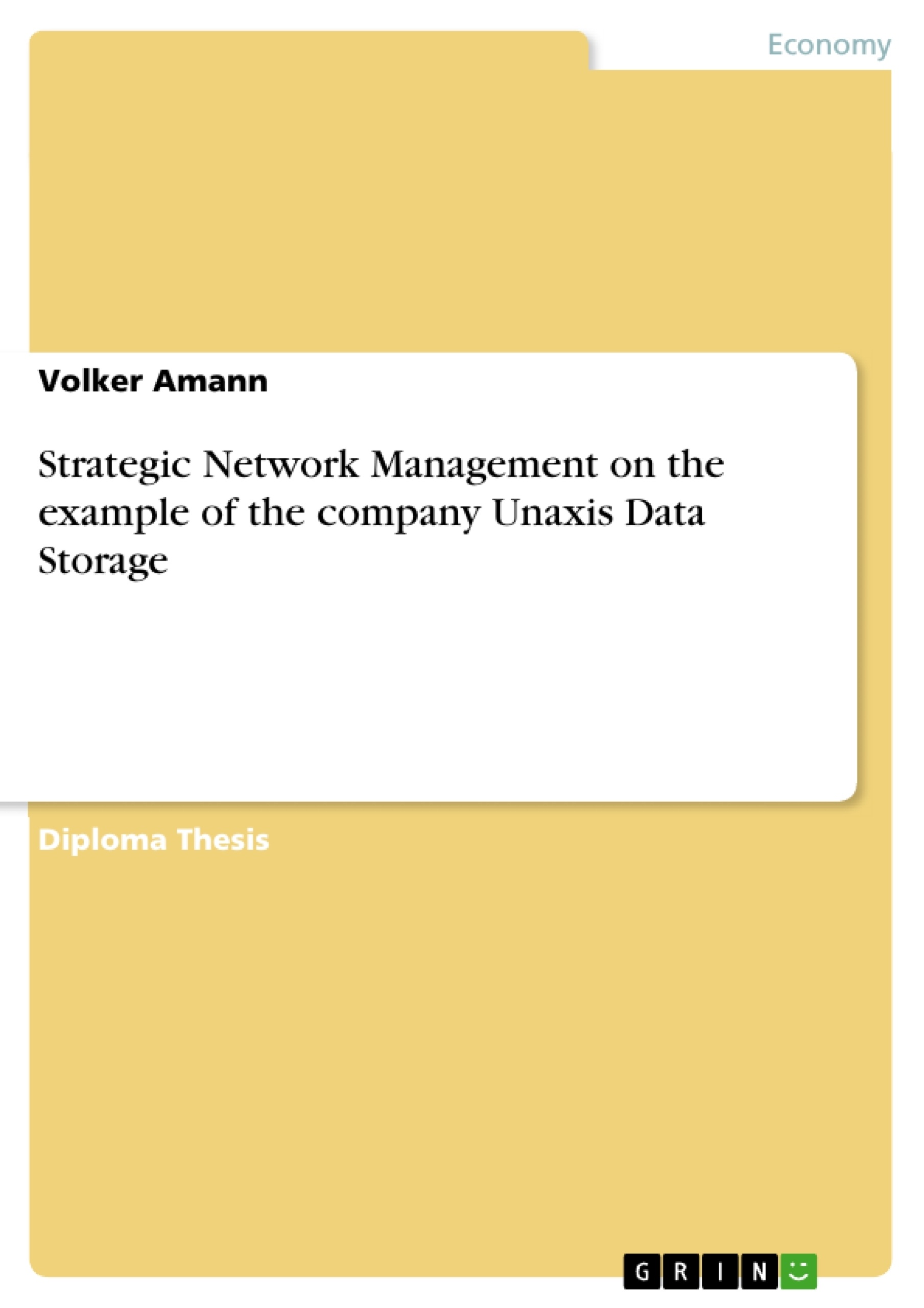The objective of this diploma thesis is to provide a practice-orientated contribution to the strategy process and strategic concepts to be applied in networks. It is evaluated how the models of the traditional strategy processes and strategic concepts are applicable in a network context.
Concerning the strategy process, the result is that the traditional strategy process is basically useable. Additionally however, completely new requirements arise with the integration in networks. It is intended to meet those new requirements with the interdependence matrix for strategic-decision making in the markets-as-networks context that is presented in this work.
The strategic concepts, like the market-based view and the resource-based view, are of high importance in a network context as well. Those concepts have their limits and therefore necessary adaptations are given. Apart from those concepts, networks by itself provide a source of competitive advantage, which is neglected in the traditional theories. Hence, various self-contained network theories are presented.
The case study was conducted in cooperation with the company Unaxis Data Storage, a highly de-integrated network company operating in the information technology industry. The goal of the case study is to compare the theoretical findings with the real business world. It is evaluated which of the strategy processes and strategic concepts presented in the theoretical part are applied in the company. In summary, it can be said that many of those theories are already used. However, it is evident that there are a few areas of possible improvements.
Inhaltsverzeichnis (Table of Contents)
- INTRODUCTION AND RESEARCH QUESTION
- TRADITIONAL STRATEGY APPROACH
- Introduction
- The strategy process
- Outline and definition
- Strategy formulation
- Strategy implementation
- Strategic concepts
- Outline and definition
- Market-based view
- Resource-based view
- Other concepts
- Strategic integration models
- Concept of strategic intent
- Evaluation
- The strategy process
- Strategic concepts
- NETWORK APPROACH TO STRATEGY
- Introduction
- Classification of networks
- Strategic networks
- The strategy process in networks
- Introduction
- Suitability of the traditional strategy process
- Formulation of strategy
- Strategy implementation
- Specific strategy process for application in a network environment
- Strategic concepts in networks
- Suitability of traditional strategic concepts
- Market-based view
- Strategic groups
- Value Chain
- Resource-based view
- Other concepts
- Integration models
- Concept of strategic intent
- Market-based view
- Specific strategic concepts for application in a network environment
- Co-opetition
- The relational view
- Creating network competence
- Network governance
- Management of heterarchical networks
- Evaluation
- Suitability of traditional strategic concepts
- CASE STUDY: UNAXIS DATA STORAGE
- Introduction
- The company
- Analysis of the traditional strategy approach
- Strategy process at Unaxis Data Storage
- Strategic concepts at Unaxis Data Storage
- Market-based view
- Resource-based view
- Other concepts
- Analysis of the network approach to strategy
- The network of Unaxis Data Storage
- Strategy processes in the network management of Unaxis Data Storage
- Application of the traditional strategy process in networks
- Specific strategy process for application in a network environment
- Strategic concepts in the network management of Unaxis Data Storage
- Application of traditional strategic concepts
- The Applicability of Traditional Strategy Processes in Networked Environments
- The Adaptation and Evolution of Strategic Concepts for Networks
- The Emergence of Network-Specific Theories and Frameworks
- The Role of Interdependence and Co-opetition in Networked Strategy
- The Practical Application of Strategy in a Network Context
Zielsetzung und Themenschwerpunkte (Objectives and Key Themes)
This diploma thesis investigates the application of traditional strategy processes and strategic concepts in network contexts. It explores the relevance of these frameworks in a rapidly changing business environment characterized by interconnectivity and interdependence. The primary objective is to contribute to the development of a more robust and applicable strategy framework specifically for network-based organizations. This study examines both traditional and network-centric approaches to strategic decision-making, evaluating their strengths and weaknesses within the context of modern business networks.
Zusammenfassung der Kapitel (Chapter Summaries)
The first chapter introduces the research question and provides an overview of the theoretical frameworks that will be explored. The second chapter delves into the traditional approach to strategy, examining the strategy process and strategic concepts like the market-based view and resource-based view. It evaluates the limitations of these traditional frameworks in the context of network environments. The third chapter shifts to the network approach to strategy, exploring the characteristics of strategic networks and their impact on strategic decision-making. This chapter analyzes the suitability of traditional strategy processes and concepts for networks, highlighting their limitations and proposing specific adaptations for networked contexts. It also presents various network-specific strategic concepts such as co-opetition and the relational view. The fourth chapter provides a case study of Unaxis Data Storage, a highly de-integrated network company operating in the information technology industry. This chapter examines the company's strategic decision-making processes, evaluating the extent to which they align with the theoretical frameworks presented in the preceding chapters.
Schlüsselwörter (Keywords)
This thesis focuses on the intersection of strategy and networks, exploring the challenges and opportunities inherent in managing strategic relationships within interconnected business ecosystems. Key themes include strategic networks, network governance, interdependence, co-opetition, traditional strategy processes, market-based view, resource-based view, relational view, and strategic integration. The case study of Unaxis Data Storage provides a practical lens for examining these themes and their implications for real-world business practice.
- Introduction
- Quote paper
- Volker Amann (Author), 2005, Strategic Network Management on the example of the company Unaxis Data Storage, Munich, GRIN Verlag, https://www.grin.com/document/65326



